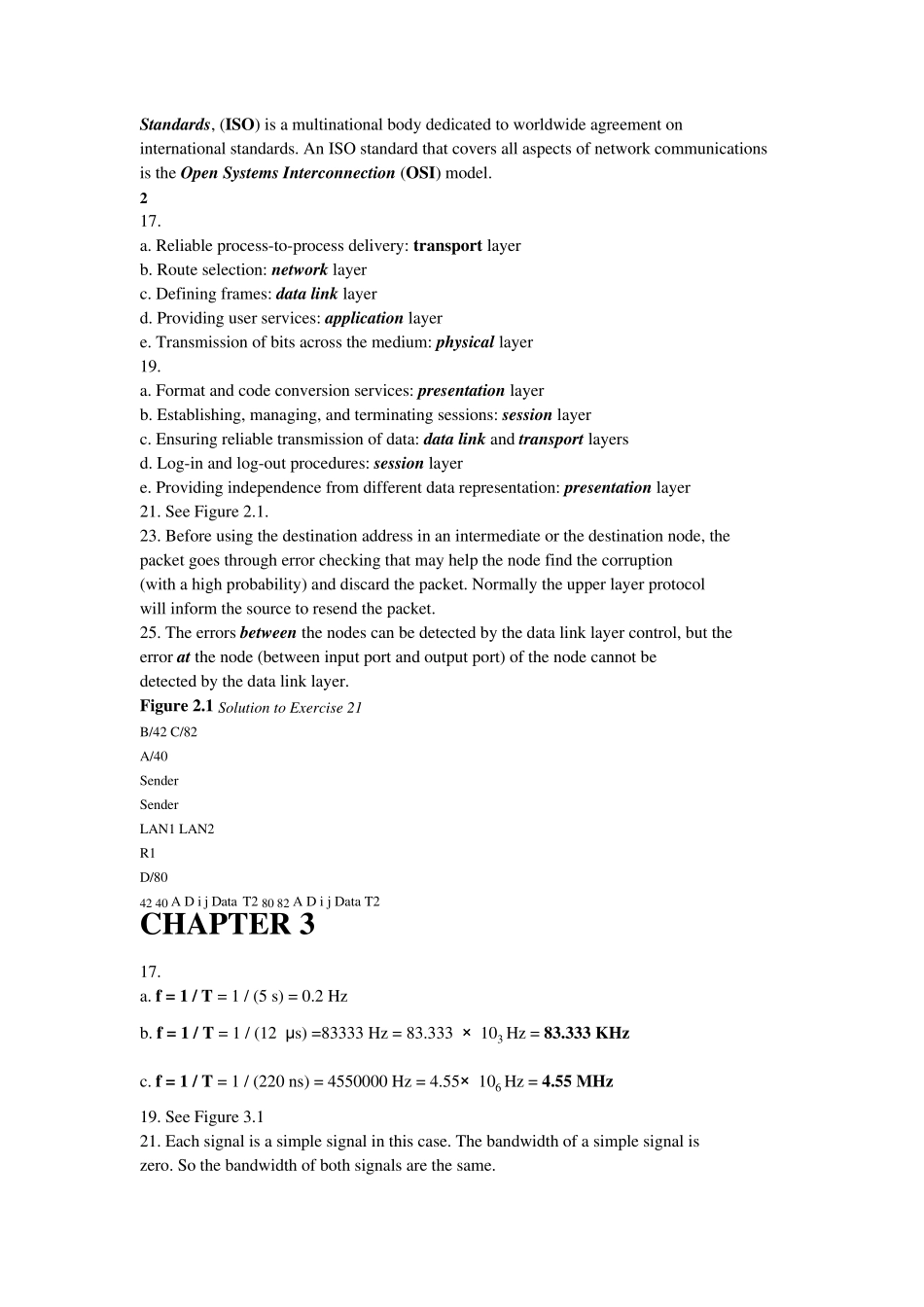CHAPTER 1 15. With 16 bits, we can represent up to 216 different colors. 17. a. Mesh topology: If one connection fails, the other connections will still be working. b. Star topology: The other devices will still be able to send data through the hub; there will be no access to the device which has the failed connection to the hub. c. Bus Topology: All transmission stops if the failure is in the bus. If the drop-line fails, only the corresponding device cannot operate. 2 d. Ring Topology: The failed connection may disable the whole network unless it is a dual ring or there is a by-pass mechanism. 19. Theoretically, in a ring topology, unplugging one station, interrupts the ring. However, most ring networks use a mechanism that bypasses the station; the ring can continue its operation. 21. See Figure 1.1 23. a. E-mail is not an interactive application. Even if it is delivered immediately, it may stay in the mail-box of the receiver for a while. It is not sensitive to delay. b. We normally do not expect a file to be copied immediately. It is not very sensitive to delay. c. Surfing the Internet is the an application very sensitive to delay. We except to get access to the site we are searching. 25. The telephone network was originally designed for voice communication; the Internet was originally designed for data communication. The two networks are similar in the fact that both are made of interconnections of small networks. The telephone network, as we will see in future chapters, is mostly a circuit-switched network; the Internet is mostly a packet-switched network. Figure 1.1 Solution to Exercise 21 Station Station Station Repeat er Station Station Station Repeat er Station Station...


